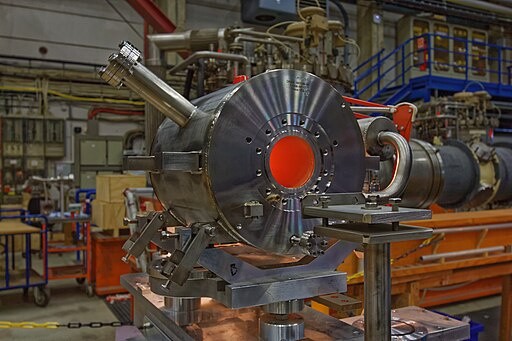Stimuli-responsive hydrogels are an important class of materials with various applications in drug delivery and nanotechnology. The most prominent of them is poly-N-isopropylacrylamide (PNIPAm). Characterizing the kinetics of its change after a temperature jump has been a topic of interest, especially at nanometer-length scales where it is impossible to depend on conventional microscopic techniques.

What is PNIPAm?
Poly-N-isopropylacrylamide is a temperature-responsive polymer first synthesized in the 1950s. Due to its dynamic changes, it has been widely used in the biomedical field, especially in tissue engineering and drug delivery.
PNIPAm is usually dissolved in water. Above the lower critical solution temperature (LCST), around 32 degrees Celsius, this polymer changes from a hydrophilic, water-loving state to a hydrophobic, water-repellent state. As a result, these materials rapidly change their size above that temperature by expelling water.
This property is helpful for various reasons. In medicine, it allows controlled drug release in a patient's body and provides a model system for proteins and tissue engineering. Additionally, it enables the cultivation of organic tissue for medical applications or as biocompatible temperature sensors.
Despite PNIPAm's benefits, it has been very difficult to experimentally observe these rapid phase transitions, making it challenging to optimize them for various applications. Because of this, the precise characterization of the kinetics of the changes of the PNIPAm polymer with temperature remains a lively research topic.
Unlocking Secrets of Important Nanogel
In a recent study, an international team of researchers at the European X-Ray Free-Electron Laser Facility (XFEL) at Schenefeld near Hamburg, Germany, examined the temperature-induced swelling and collapsing of PNIPAm. Their investigation is described in the paper "Real-time swelling-collapse kinetics of nanogels driven by XFEL pulses."
The fast sequence of X-ray pulses from the world's largest X-ray research laser facility has allowed scientists to scrutinize the rapid, temperature-dependent changes in the PNIPAm nanogel. This was made possible using X-ray Photon Correlation Spectroscopy (XPCS).
XPCS at the XFEL enables scientists to follow the time evolution of driven and out-of-equilibrium systems over time and length scales that other more conventional experiments cannot reach. In this study, the ultrashort X-ray pulses act as pumps that heat the sample and as probes of the dynamics with sub-microsecond resolution.
Led by Felix Lehmkühler, the research team performed the measurements with high enough time resolution to follow the structure and motion of the nanogels. The X-ray pulses were used to heat the nanoparticles by about 100 nanometers and measure their structural changes through their dynamics.
Previous studies were limited to indirect measurements of the nanogel's swelling or collapse kinetics. In the new study, the experts found that the nanogel shrinks significantly faster in 100 nanoseconds but takes two to three orders of magnitude longer to swell. The results of this research can help scientists better understand the polymer's features for various applications, like the development of enhanced drug delivery systems.
RELATED ARTICLE : Atomic X-Ray Free-Electron Laser Lights Up for the First Time With an Upgrade That Can Fire Million Pulses per Second
Check out more news and information on X-Ray Laser in Science Times.
© 2025 ScienceTimes.com All rights reserved. Do not reproduce without permission. The window to the world of Science Times.











